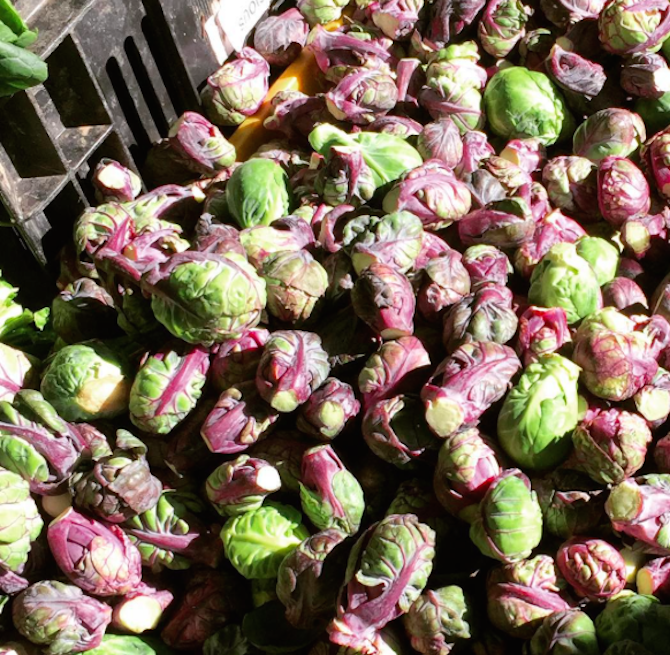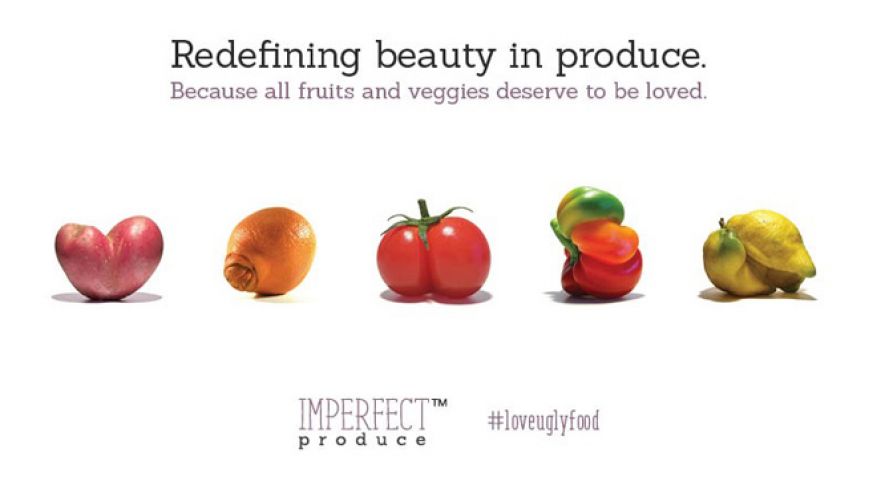New research suggests that half of the produce grown in the U.S. is being thrown away. Immediately, I cringe at thinking back to the half carton of strawberries I didn’t use quick enough or the cucumber that went limp in the back of my fridge. Situations of forgetfulness in our own kitchens are not completely to blame, however.
According to a government tally, about one third of food waste comes from handlers at the “downstream” of the chain – meaning consumers and retailers. This is the food we throw away in our houses or pick over at the grocery store. However, individuals involved at the “upstream” process – farmers, wholesalers, truckers, etc – report a high percentage of food disposal before the food even arrives at the store.
Today the industry is striving for perfect harvests due to the very high standards consumers have set. Any fruits or vegetables scarred with blemishes, that don’t affect the quality of taste of the product, are simply not bought by households or restaurants. Knowing this, grocers will not accept any shipments that are any less than flawless. This causes farmers to either leave the imperfect food in the field to rot, feed it to cattle, or just transfer it straight to the landfill after harvest.
The retail and upstream waste combined raises the amount of U.S. food produce waste to nearly half. Just let that sink in for a moment.
And the U.S. isn’t the only country to contribute to this problem. The global food waste is thought to amount 1/3. That would weigh about 1.6 billion metric tonnes or equivalent to $1 trillion. This food waste plays a role in about 8% of global climate pollution.

Photo courtesy of theguardian.com
According to the EPA, the single biggest component making up landfills is food waste in the U.S. The produce causes a high amount of methane to be released into the air – which is far more harmful than carbon dioxide.
In addition to harming our environment, people all across the nation are still struggling to find enough to eat. According the Shenggen Fan, the director general of the International Food Policy Research Institute in Washington, “about 5-10% of the population are still hungry.” So, while an incredible amount of produce is being pitched to meet our ideals, people still are in search for fresh food to fill their stomachs.
For these reasons, national hunger and the global climate cannot be fixed until there are steps made to reducing the amount of food waste.
The owner of a mid-size east coast trucking company explained a situation with a grocer that dug through 50 cases and found one ugly head of lettuce that would have still passed a USDA inspection. Yet, the grocer refused to buy the shipment of nearly perfect cabbages. “If you use the Paca (Perishable Agricultural Commodities Act of 1930) on them, they are never going to buy from you again. Are you going to jeopardize $5m in sales over an $8,000 load?”
This type of rejection can happen multiple times a month to growers. “These big growers do not want to piss off retailers. They don’t enforce Paca on Safeway, Walmart or Costco,” said Ron Clark, co-founder of Imperfect Produce. And just take a guess where the unsold loads end up.

Photo courtesy of @uptoacres on Instagram
Luckily, steps are being made to correct this alarming issue. Startups, such as Food Cowboy and Imperfect Produce, have been founded to end the amount of food waste and ideally re-route any rejects to places that need it most. The Obama administration and the UN are working to halve all avoidable food waste by 2030. ReFED has broken down solutions and reasons to decrease food waste, gaining the support of the Natural Resources Defense Council, food producers, and retail chains.
As consumers, a lot can be done from the comfort of our own shopping carts by practicing a new mindset. Instead of avoiding fruits that are misshapen or blemished, embrace them. Join movements that are working toward ending food waste. It’s even as easy as shopping at Whole Foods, who has teamed up with Imperfect Produce to sell ugly fruits and vegetables first starting in stores in Northern California. Even liking ugly fruit pages on Facebook or sharing photos of your funny-looking purchases will help raise awareness and make the uglies less forbidden. Come on, we know you already document all of your food.
When we start lowering our incredibly high, sometimes unattainable standards for what we expect to see at the store, shipments may not have to be rejected and wasted in landfills. Accept the imperfections because, truly, they’re only natural.

Photo courtesy of foxnews.com


